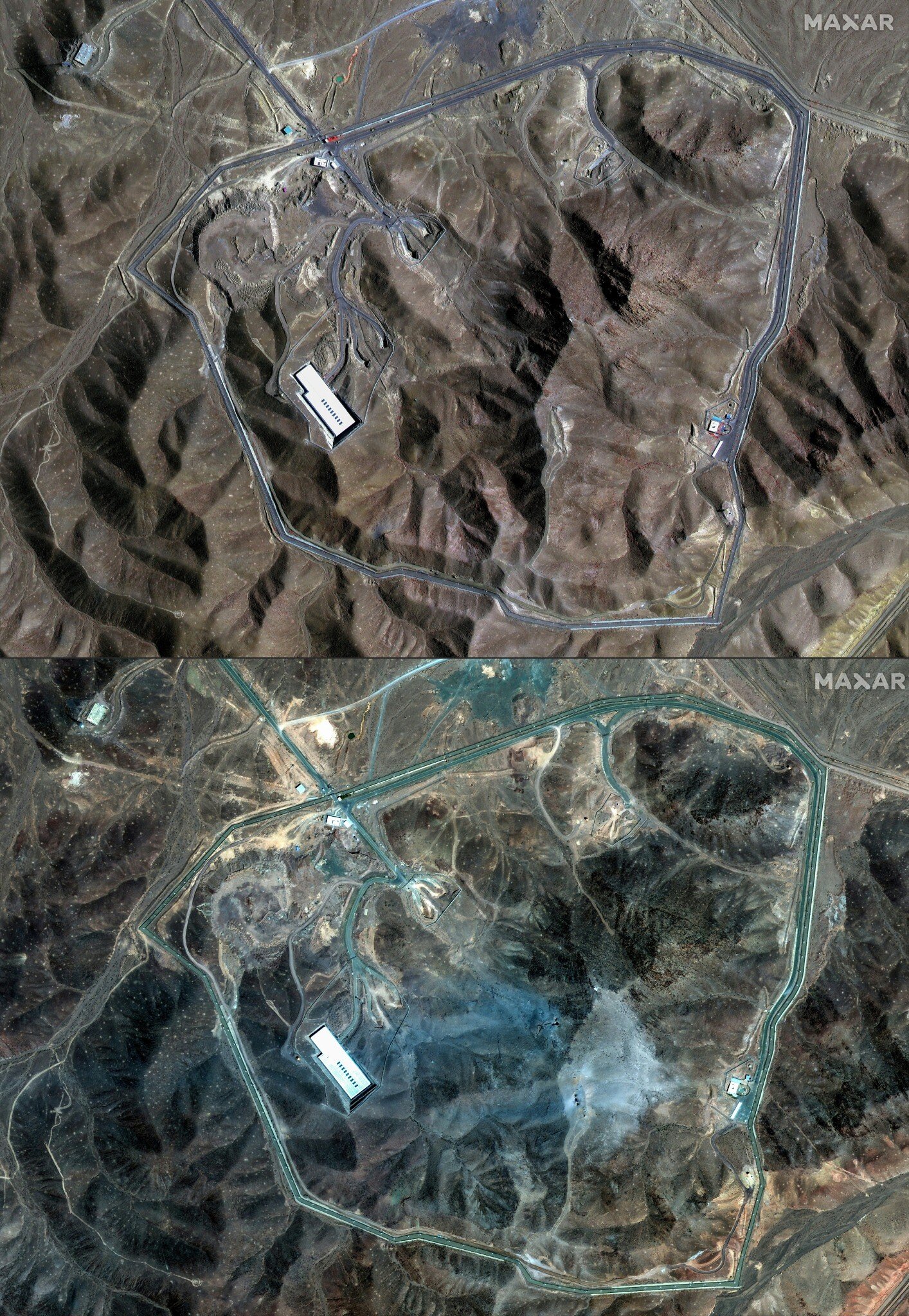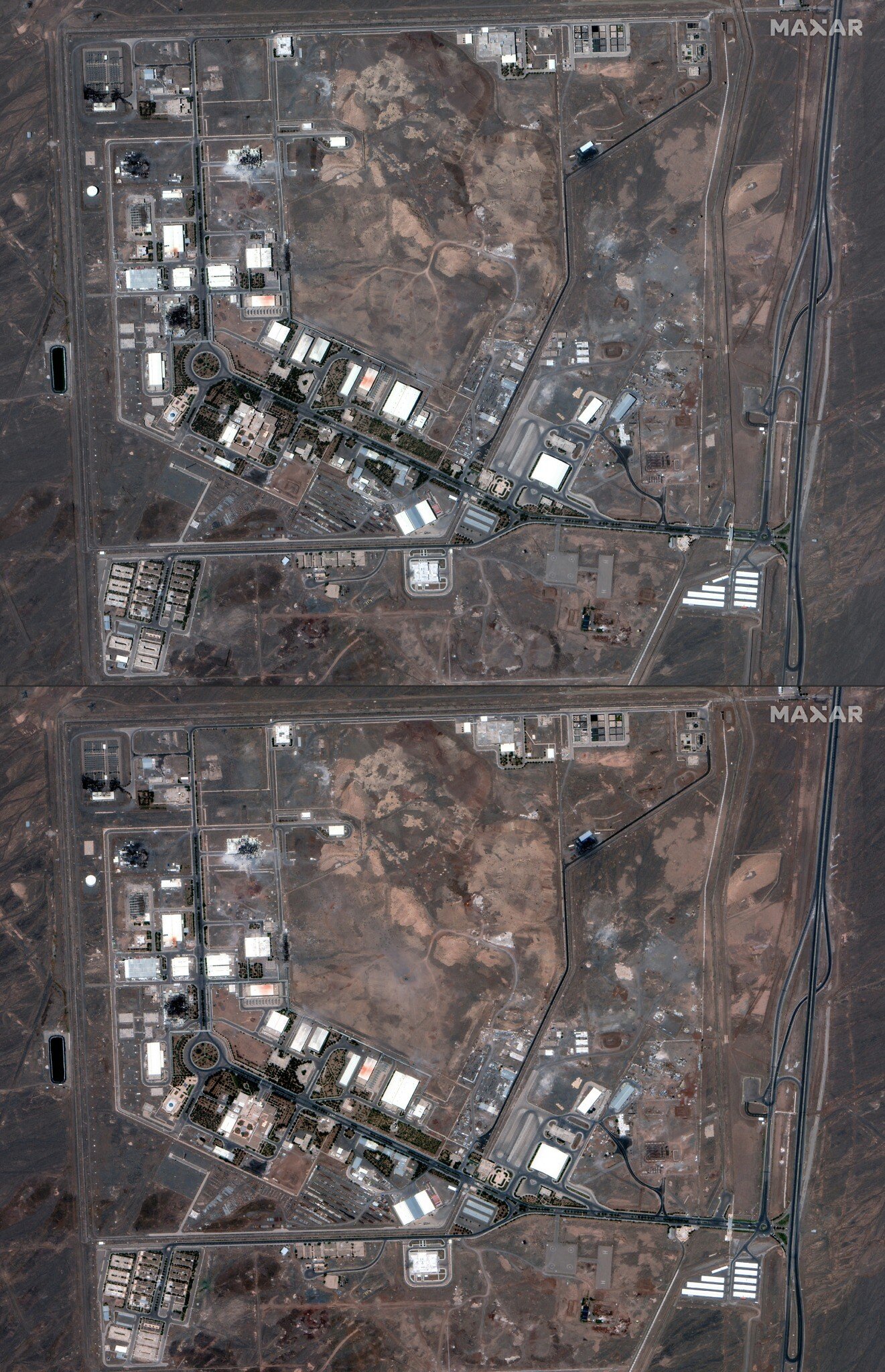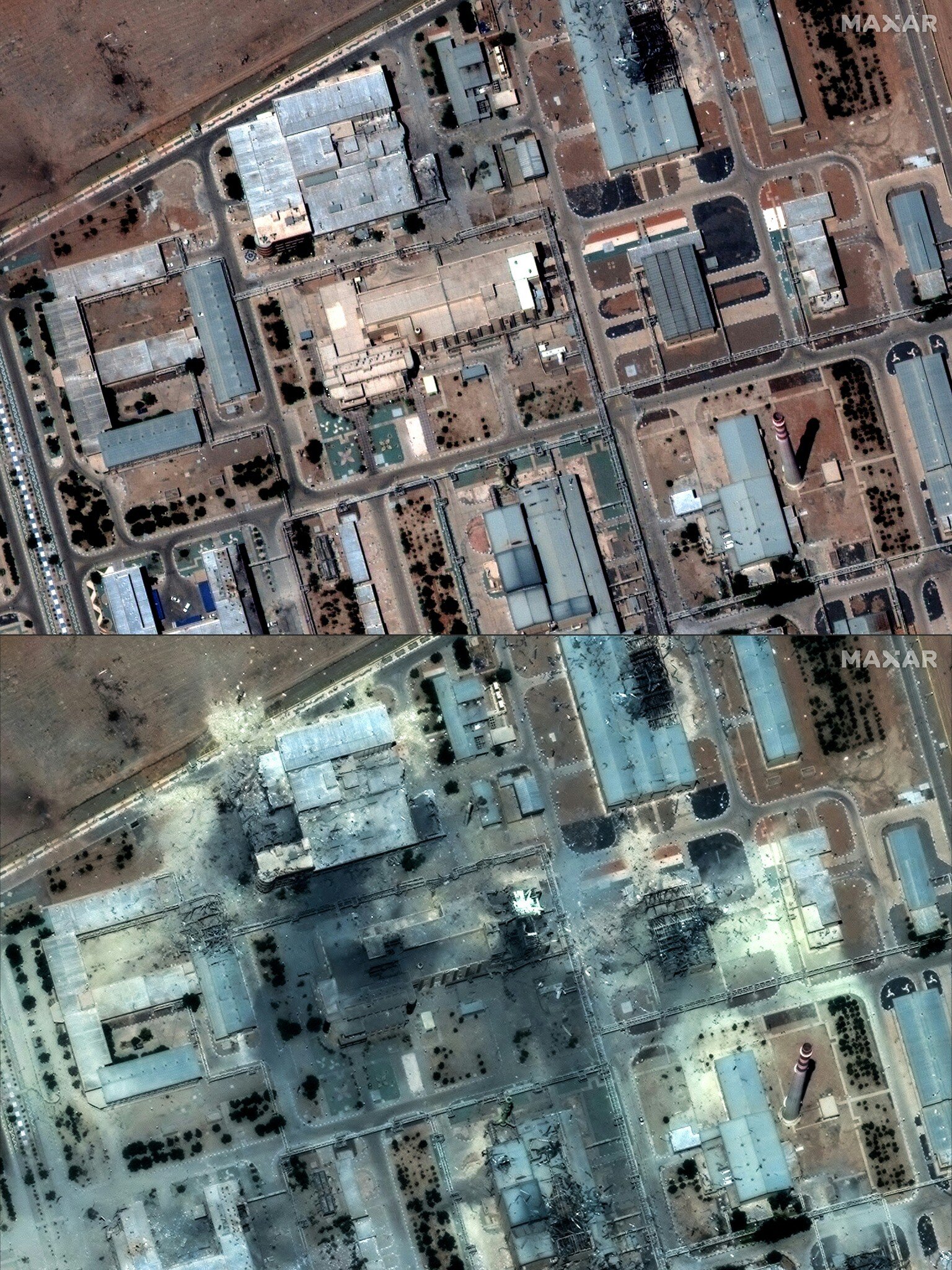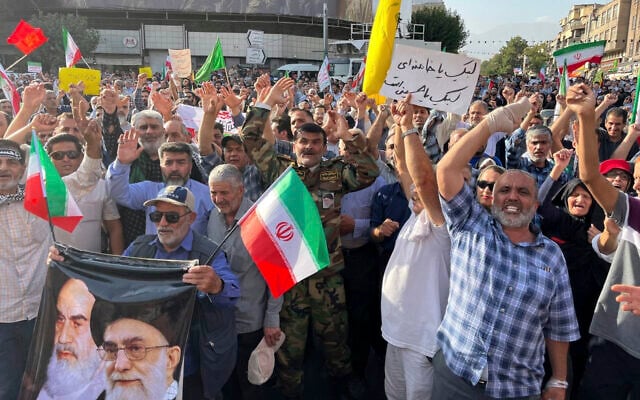



Satellite photos appeared to show damage to Iranian nuclear sites after the United States dropped massive bunker-buster munitions and fired missiles at them, but the effectiveness of the strikes and whether Iran still held highly enriched uranium remained unclear Sunday.
US President Donald Trump said the air raids “totally obliterated” nuclear sites at Isfahan, Natanz, and the hardened underground Fordo, calling them a “spectacular military success.” The assessment was echoed by Defense Secretary Pete Hegseth, who said the strikes “devastated the Iranian nuclear program.”
However, top US general Dan Caine, chairman of the Joint Chiefs of Staff, gave a more muted assessment of the strikes, saying that the full understanding of their effectiveness will “take some time.”
“Initial battle damage assessments indicate that all three sites sustained extremely severe damage and destruction.”
So far, Tehran has given little away about the extent of its losses.
The strikes targeted three nuclear facilities, most notably the deep underground Fordo site, which necessitated the use of massive, earth-penetrating bombs that Israeli jets cannot carry. Also targeted were the Natanz and Isfahan nuclear facilities, which according to the Pentagon were hit by submarine-launched cruise missiles.
Fordo, a uranium enrichment facility that is buried some 90 meters (about 300 feet) underground beneath a mountain in northern Iran, was struck by 12 30,000-pound bunker buster bombs dropped by seven B-2 strategic bombers that the US used during the operation.
Bombers also dropped two of the bombs on Natanz, while submarine-launched cruise missiles targeted Isfahan, according to the Pentagon.

Images from space published by Maxar showed at least six holes on the mountain that sits above the Fordo facility, where the massive GBU-57 Massive Ordnance Penetrator bombs impacted.
Craters could also be seen at the Natanz facility.
The “bunker buster” bomb is believed to be able to penetrate about 200 feet (61 meters) below the surface before exploding.
Iran’s health ministry acknowledged that the strikes had wounded an unspecified number of people, but said none “showed any signs of radioactive contamination” after seeking treatment.
The head of the UN nuclear watchdog said that he did not know the extent of damage at Fordo.
“There are clear indications of impacts,” International Atomic Energy Agency chief Rafael Grossi told CNN, “but as for the assessment for the degree of damage underground, on this we cannot pronounce ourselves.”
“No one could tell you how much it has been damaged,” he continued. He added that because of observed changes in the shape of the sites, “one cannot exclude that there is significant damage there.”

Grossi said that the Natanz above-ground facility had been “completely destroyed,” while its underground halls “suffered a lot” because of cuts to electricity as the result of Israeli attacks.
The Isfahan site has also suffered “very significant damage,” Grossi said.
Fordo, said Grossi, would not be damaged by powers cuts because it has internal emergency electricity sources.
Despite wide speculation that the nuclear material had been moved from the sites ahead of the strikes, US Secretary of State Marco Rubio said the US believes that a significant amount of Iran’s stockpile of 60 percent enriched uranium was located in the Isfahan facility when it was struck.
In an interview on NBC’s “Meet the Press,” Rubio says that, while “no one will know for sure for days,” he doubts that Iran’s uranium stockpile was relocated before the operation.
“I doubt they moved it,” he told NBC’s “Meet the Press.” “They can’t move anything right now inside of Iran. I mean, the minute a truck starts driving somewhere, the Israelis have seen it, and they’ve targeted it and taken it out. So our assessment is, we have to assume that that’s a lot of 60% enriched uranium buried deep under the ground there in Isfahan.”

“That really is the key,” added Rubio, saying Iran should now “bring [the stockpile] out of the ground and turn it over. Multiple countries around the world will take it and down blend it. That’s what they should do with that.”
He allowed that it would take days to know for sure whether the nuclear material was there.
Heloise Fayet, a nuclear expert at the Institut Francais des Relations Internationales, said satellite images showing activity around Fordo “suggest enriched uranium stock may therefore have been transferred to sites not monitored by the IAEA.”
“We previously had knowledge, albeit imperfect, of the program thanks to the agency’s inspections; now, no inspections are possible,” she told AFP. “As for Iran’s technical expertise, it cannot be destroyed, knowing that thousands of people have participated in Iran’s nuclear program.”
Andreas Krieg, a senior lecturer at King’s College London, called the US action a “high-risk operation that delivers unpredictable outcomes,” given the facility was deep underground.
“Trump has been using OSINT (open-source intelligence) accounts to say Fordo is gone, while the Iranians claim there is only surface-level destruction,” he added, in reference to a tweet shared by Trump from a user named @Osint613, who often tweets information about Israel and the region.
Ali Vaez, Iran project director for the International Crisis Group, claimed destroying Fordo “won’t necessarily end Iran’s nuclear program.”
“Tehran has produced hundreds of advanced centrifuges in the past few years that are stored in unknown locations,” he said.
Also unclear on Sunday is what Iran’s next move might be.
According to Krieg, Iran will seek a “calibrated response — loud enough to resonate, but measured enough to contain.”
Michael A. Horowitz, a geopolitics and security analyst, said its options included attacking US assets, closing the Strait of Hormuz — a vital conduit for the world oil trade — or even attacking energy facilities in the Gulf, which hosts several US military bases.
“None of those are good options that achieve anything — this is mostly about saving face,” he posted on X. “The risks, on the other hand, are great.”
However, Horowitz said there were other ways to respond, including a limited retaliation against the US before returning to strikes against Israel and finally negotiating a settlement.

The Iranian government now realizes that its very existence is at stake, said Renad Mansour, senior research fellow at the Chatham House think-tank, casting it back to the days of the 1980-1988 Iran-Iraq war.
“It’s survival mode,” he said, predicting “more violence” in the short-term with the prospect of a “managed de-escalation” and eventual negotiations.
Hamidreza Azizi, visiting fellow at the German Institute for International and Security Affairs, said Iran might allow Trump a “symbolic win” and retaliate against Israeli targets instead.
“This keeps Washington out of the war, while intensifying pressure on Tel Aviv. The risk of drawing the US further in would now rest on Trump’s next move,” he posted on X. “If Trump continues to strike Iran without new provocation, it looks more like going to war on Israel’s behalf. That’s politically costly, given domestic opposition to war with Iran.”
Meanwhile, Iran could deny knowledge of what happened to its enriched uranium, avoiding IAEA inspections, and later leave the Nuclear Non-Proliferation Treaty.
“Trump may have scored a tactical win, but if Iran plays this smart, they hand him a political grenade,” Azizi wrote. “All while shifting the nuclear game into murkier, more dangerous territory.”
Lazar Berman contributed to this report
